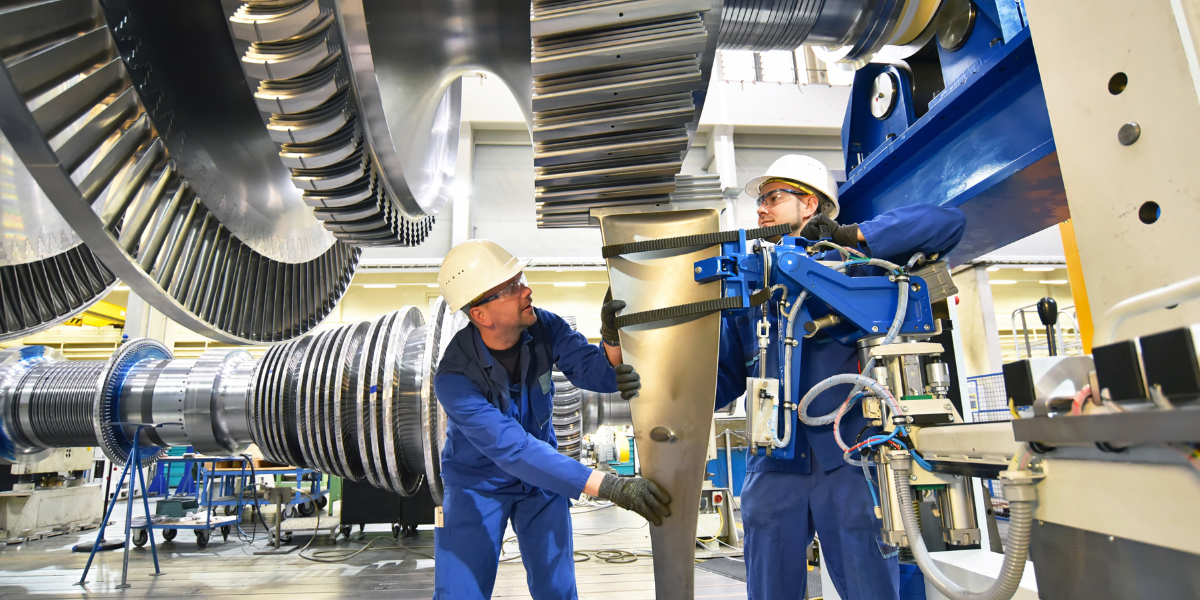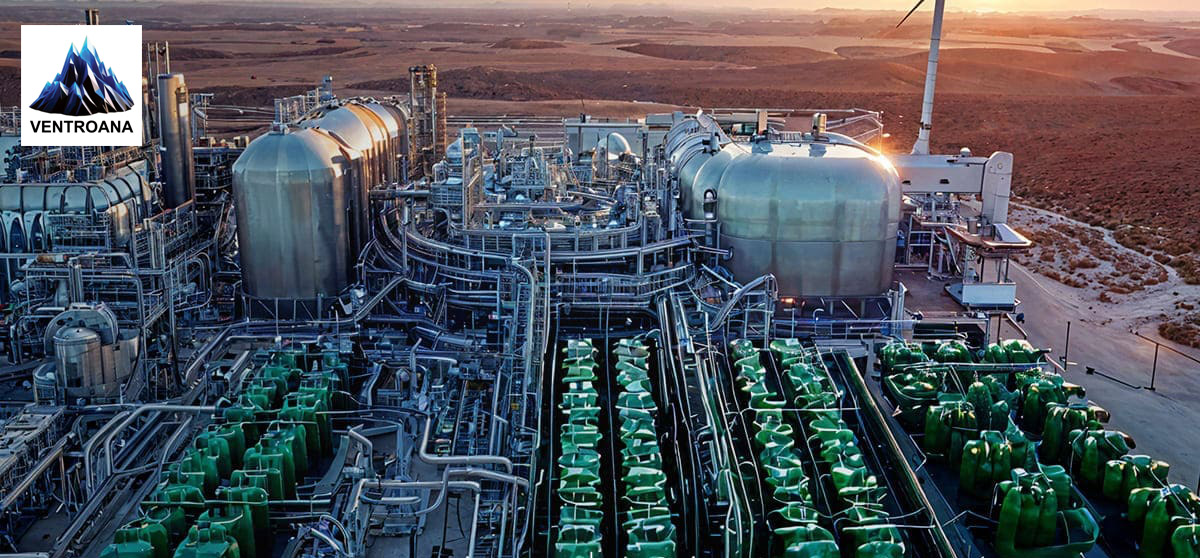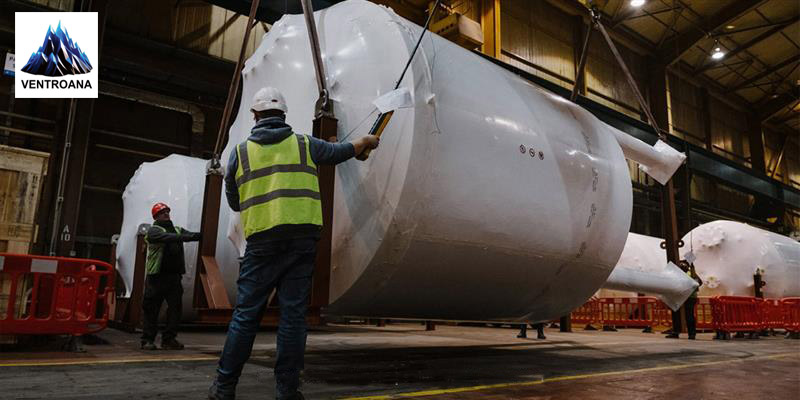Renewables
February 12, 2024

Gas turbines have been used to produce power since 1939. Gas turbines are one of the most popular power generation systems today. A gas turbine is a combustion engine at the core of a power plant that may transform mechanical energy from natural gas or other liquid fuels.
Gas turbines get their name from the warm gas generated when fuel burns, not from the fuel itself. Natural gas, oil, and synthetic fuels are just a few of the fuels that gas turbines can run on. Gas turbines have continuous combustion compared to reciprocating IC engines, which have intermittent combustion.
This article covers a complete guide to understanding the Difference between a Combustion Engine and a Gas Turbine.
The compressor, combustion system, and turbine are the three main components of a gas turbine. On the same shaft, there are these three crucial parts. The engine's compressor pulls air in, compresses it, and sends it to the combustion chamber at high rates of speed.
The combustion system typically consists of a ring of fuel injectors that continuously pump fuel into combustion chambers where it mixes with the air. More than 2000 degrees Fahrenheit is used to burn the mixture. The combustion process generates the gas steam and has a high temperature and pressure. The gas stream enters and expands through the turbine portion.
A complex arrangement of alternate still and spinning aero foil-section blades makes up the turbine. The rotating blades spin as hot combustion gas expands through the turbine. In addition to driving the compressor, which draws more pressured air into the combustion chamber, the rotating blades also turn a generator, which turns out power.
The Brayton cycle is the thermodynamic procedure utilized in gas turbines. The pressure ratio and firing temperature are two important performance variables.
The design affects this compression ratio. Industrial (heavy frame) or aero-derivative designs are two options for gas turbines used to generate electricity. Industrial gas turbines typically have lower pressure ratios of up to 18:1 and are built for stationary applications. Aero derivative gas turbines work at higher compression ratios - up to 30:1 - and are smaller, more lightweight, and more compact versions of aircraft jet engines.
They are smaller and have greater initial (capital) costs but offer improved fuel efficiency and reduced emissions. The temperature at the compressor inlet affects aero-derivative gas turbines significantly.
However, the thermal conditions that the metal alloy of the turbine blades can withstand set a limit on the turbine inlet temperature. To prevent thermal damage to metallurgical components, some manufacturers have engineered blade coatings and cooling systems to raise inlet temperatures as high as 1600oC. Gas temperatures at the turbine inlet can range from 1200°C to 1400°C.
A simple cycle of a gas turbine power plant's energy conversion efficiency usually is around 30%, with even the most efficient designs hovering at about 40% due to the power needed to operate the compressor. The exhaust gas, about 600oC as it leaves the turbine, still contains a significant amount of heat.
The efficiency of a gas turbine power plant can reach 55 to 60 percent by using the waste heat to generate more practical work in a combined cycle design. However, operational restrictions related to running gas turbines in combined cycle mode include:
The following factors show the main variation between gas turbines and combustion engines.
Electric system load balancing and grid reliability depend on the ability to dispatch power plants in a few minutes. The time it takes for a power plant to start and fill up with power depends on the generating technology.
The combustion engine starting is easier than the gas turbine. Combustion engine power plants can start and reach full load in less than 10 minutes. Still, combined cycle gas turbines might take up to 20 minutes, offering flexible, fast flexibility.
Natural gas-fired power plants are the electricity markets' most adaptable and responsive power-generating assets. Due to their daily load adjustments and dispatch ability, natural gas power plants can balance the intermittent production of renewable energy sources by ramping up and down in response to demand. Gas turbines are not profitable for the short-duration pulse load required to balance solar and wind power production.
Forget the maxim "bigger is better"; molecularity in the design of power plants improves flexibility and reliability. Multiple-generating-unit combustion engine power plants supplement renewable energy without sacrificing efficiency. Furthermore, unlike big combined cycle gas turbines, combustion engine power plants have a wide range of load turn down. This makes them perfect for distributed energy applications.
Power plant performance under varying conditions is a significant factor in the choice of technology. This is because there is an increasing need for flexible power worldwide, frequently in severe climates, due to their reduced sensitivity to temperature and humidity, combustion engines. The temperature and volume of the exhaust gas from the gas turbine are high.
Power plant efficiency has become a crucial operational factor for electric power systems worldwide. This technical comparison compares gas turbine output range and part-load efficiency with internal combustion engines.
Flexibility in power plants is as essential as a critical instrument for managing fluctuation in electric loads and offering grid support services. Ramp rate, or the speed at which a power plant may increase or decrease output, is one indicator of this flexibility.
One of the major global water uses is electricity. In 2010, 583 billion cubic meters of water were used for energy production, or 15% of all water withdrawals worldwide. The energy industry is responsible for a significant portion of water withdrawals in several nations.
They use water for hydroelectric generation, thermal power plant cooling, emissions control systems, and the mining and processing of fossil fuels—NOx emissions from a gas turbine range from 15 to 25 ppm.
In the scenario of a disruption in the fuel supply, power plants that can dependably run on various gaseous or liquid fuels offer energy security. Multi-fuel combustion engines can swap fuels instantly while operating at peak efficiency and output. While compared to gas turbines, which have lower availability and production when working on fuel oils, this flexibility offers a significant benefit. With fuel flexibility, gas engine power plants can adapt quickly to variations in fuel availability and meet changing dispatch needs.
Ventro Analytics provides you with all kinds of gas turbine solutions and heavy equipment in a wide range. Let's consult with our expert team and enjoy the ultimate benefits. You can directly visit our website to get the latest information about all the industrial tools. For further assistance related to turbines, you can even call us or write us an email. Visit our Contact Us
Tags:

Successful Implementation of Green Hydrogen in Power Plants
Discover how green hydrogen revolutionizes power plants with sustainable energy solutions, reducing ...

Driving Innovation and Resilience: Insights from the 10th Annual Energy Supply C...
Gain insights on driving innovation and resilience at the 10th Energy Supply Chain & Procurement Sum...

Understanding EPC Engineering: Key Concepts Explained
Discover the essentials of EPC Engineering, covering contracts, project phases, and roles of EPC con...